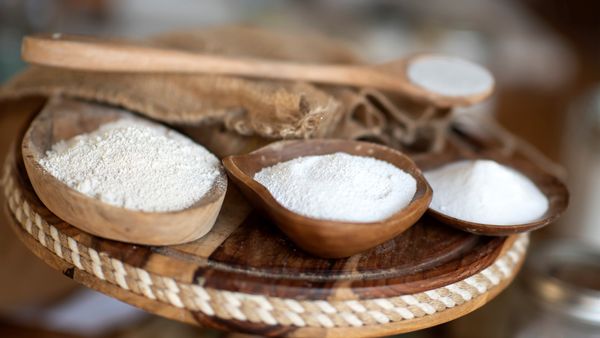
There are a thousand household cleaning products, but some are tried and true. Take washing soda — maybe you haven't heard of it or you don't know the difference between baking soda or borax or regular old powdered laundry detergent. Washing powder looks like the rest of them — it's just white powder — but it has some pretty special cleaning properties.
Washing soda is sodium carbonate (Na2CO3), and is chemically different from baking soda, which is the common name for sodium bicarbonate (NaHCO3). Sometimes called "soda ash," this moderately basic compound — it has a pH of 11, which is about the same as ammonia — was first made by burning plants that had been growing in soils high in sodium. It can be used for tasks that need a higher pH than baking soda, which is only slightly alkaline.
Advertisement
Bases are useful for cleaning because they break down acids and oils, which would have been nice to know that one time you spilled salad dressing all over your favorite pants. Washing soda is a staple in laundry rooms for this reason — it can remove a wide variety of stains from clothing, including coffee, blood and grease. You can dissolve washing powder in water to make a pre-soaking solution for even the most stubborn stains.
Sodium carbonate can also be used to mitigate the problems associated with "hard water" — or water with a high mineral content — when it comes to cleaning clothes. Hard water makes it difficult to clean laundry completely because the minerals in the water keep the detergents from doing their best work. Washing soda "softens" the water by binding to the minerals in the water, allowing the detergents to lift dirt from fabric.
Washing soda can also remove coffee and tea stains from ceramics or grease from pots and pans. It can cut through soap scum in your bathroom and even clean out a clogged drain if you pour a cup (8 ounces) down the drain with about 2 to 3 cups (16 to 24 ounces) of boiling water.
Advertisement


